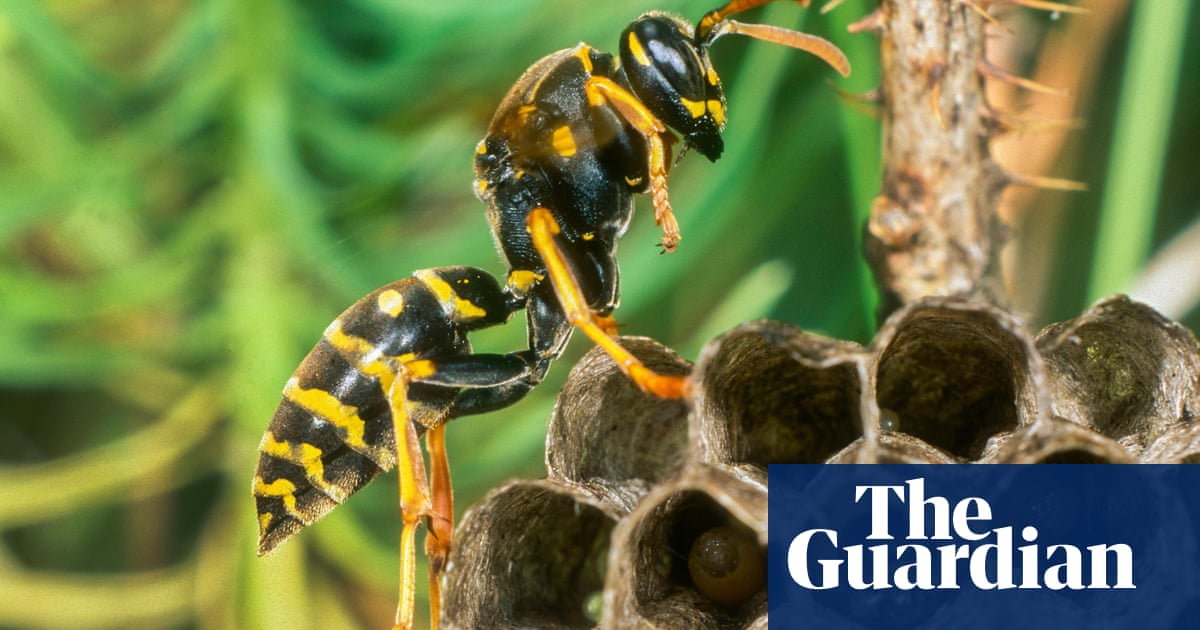Despite embracing an unruly approach to gardening, I am compelled to battle our hedge when the path becomes impassable. While cutting back some beech recently, my partner yelled out that he’d been stung. Moments later, we spotted a football-sized wasps’ nest hanging from a branch of our dogwood. Within minutes, I was nursing a sting of my own and hatching a relocation plan.
Being a former beekeeper, I’m fairly confident around stinging insects. So come nightfall I put on my old beekeeping suit and carefully placed a compost bag around the nest before cutting off the branch it hung from and placing the whole thing in a secure box. We nervously walked the package into the woods, opened the box and bag, then ran home. The internet assures me that the wasps will be temporarily baffled but eventually set about making a new home – far from my garden, hopefully.
Now, I’m not recommending this approach to ill-equipped gardeners. But the experience made me realise that the prejudice I’ve long held against wasps (developed while keeping bees – they are known to attack hives to eat the honey and the honeybees) was starting to come undone.



I amused by how chaotic their moves seem to be. They can just hang in one place if they want, they do, but when there’s something of interest, like an open food plate or a smelly basket with it, they’d fly like waplane pilots avoiding enemy fire and one way or another land on target and\or try to sneak into a container. Although I fear their nests on discovery, I kinda enjoy to observe how they wrote themselves into a context of human’s countryside, and, unlike many other creatures, they don’t damage plants and buildings, unlikely to poison you and are comparatively rare to occupy isolated living spaces.